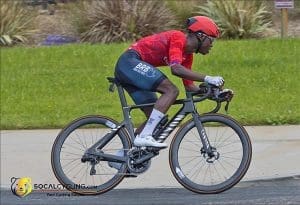By Richard Duquette, Esq, Law Firm of Richard Duquette
Listen to the Podcast
When bicyclists are involved in crashes, they can receive a variety of injuries ranging from scrapes and bruises, to broken bones and soft tissue damage, to traumatic brain injuries (TBI). This series of articles discusses the diagnostic tools available for proving a mild traumatic brain injury (MTBI). MTBI can increase the value of a personal injury settlement by $100,000 or more, because of the permanent lifestyle changes it causes.
Part 1 discusses the symptoms and various field diagnostic tools available to first responders, as well as the imaging technologies that show TBI. Part 2 will discuss methods of proving lifestyle effects. Part 3 will discuss the evidentiary issues involved in getting these facts to the jury.
But first, what is an MTBI? It’s partially a misnomer in that the use of the term “mild” implies it is not serious. The reality is that the word is used in a relative sense. A “mild” traumatic brain injury can still be permanent and debilitating. A mild TBI is when an injured person loses consciousness for less than thirty (30) minutes. A moderate TBI occurs when a person loses consciousness for more than thirty (30) minutes. A severe TBI is when a person loses consciousness for six (6) hours or more, and is commonly associated with a vegetative state or severely altered consciousness. By contrast, a mild TBI usually means that an individual can return to normal activities, but is hampered by lingering cognitive, emotional, sensory, and behavioral symptoms. Some examples include slower cognitive processes, confusion, diminished vocabulary or sequencing abilities, mood swings, social anxiety, difficulty making casual conversation, sensitivity to light and sound, nausea, and motion sickness.
Second, how do mild traumatic brain injuries happen? In the bicycle context, these injuries often happen due to contact with the ground, though they can occur from contact with the vehicle itself or even from being run over by a wheel. Bicyclists often suffer two impacts (one from the car and the next from being thrown to the ground), and head injuries tend to be most associated with the second impact. Concussions and closed head injuries involving temporary loss of consciousness sometimes occur. A broken helmet can often be a sign that this has happened.
- FIELD DIAGNOSTIC TOOLS
Often, MTBI is not detected at the hospital during emergency treatment because treatment is focused on diagnosing and treating broken bones and other injuries. So long as the person is conscious and not hemorrhaging, emergency room physicians will probably not diagnose a TBI immediately. So, signs of ongoing impairment often begin to manifest themselves later in recovery. This is where other diagnostic tools become essential. The remainder of this article discusses these tools.
The Glasgow Coma Scale (GCS)
One of the fundamental and primary tools for assessing a head injury is the Glasgow Coma Scale (GCS), which is often used by first responders to assess the need for further evaluation. This test collects observable facts about symptoms and the injury itself, assigning a risk score to the patient based on factors such as eye response, verbal response, and motor response. For each category, the more severe symptoms are assigned the lowest score. Therefore, a lower total score on the GCS will indicate a greater risk of severe brain injury. However, as noted above, not all traumatic brain injuries are immediately apparent, and often hemorrhages can develop after the fact. The GCS is an emergency assessment measure that only accounts for immediate symptoms observable by the naked eye. It does not replace a full neurological or psychological evaluation. It
For this reason, imaging tools are also essential for a full diagnosis of the brain. The types of imaging can roughly be divided into “anatomical” imaging and “physiological” imaging. Anatomical imaging reveals structural symptoms, while physiological imaging reveals functional symptoms. In any brain injury case, it is helpful to be able to prove not only a structural symptom such as a lesion or a hemorrhage, but also a functional impairment such as diminished blood flow.
-
ANATOMICAL (STRUCTURAL) IMAGING
X-Ray Imaging
X-Rays are the standard diagnostic imaging tool for a wide variety of injuries. However, in the brain injury context, they do not reveal much. This is because of the type of radiation they use. X-Ray imaging works by sending short electromagnetic waves into the area of the body you want to view, and detecting the absorption of the waves to reveal an image. Denser materials such as bone absorb the most radiation, and appear white, while tissues of medium density such as fat absorb less and appear gray. Tissues with the least density such as lungs and other organs absorb the least amount of radiation, and appear black. For this reason, X-Rays can tell whether there is a skull fracture (which is often a sign of a TBI), but do not tell us much more beyond that in terms of damage to softer tissues. As it relates to the brain, X-Rays are the least precise imaging tool for detecting damage. They have some usefulness with identifying and monitoring tumors, but in the case of a traumatic injury, an X-Ray image’s usefulness is limited to identifying skull fractures or major, obvious structural damage.
Computerized Tomography (CT) Scans
CT Scans combine multiple X-Rays taken from a variety of angles to generate cross-sectional images of bones and soft tissues. Thousands of X-Rays are taken in a short time by a rotating scanner, and each image is fed into the computer, which assembles them for a total picture of the brain. This diagnostic tool is particularly useful for identifying lesions, bleeding, and other symptoms of head trauma, as well as strokes, aneurysms, blood clots, and tumors.
- PHYSIOLOGICAL (FUNCTIONAL) IMAGING
Magnetic Resonance Imaging (MRI)
MRI uses nuclear magnetic resonance to obtain detailed contrast images of anatomical features and physiological processes. It works by surrounding the head with a magnetic field that generate signals. These signals are then read by a computer and turned into an image of the brain. In ordinary bodily injury situations, they are used to detect damage to the connective tissues, such as ligaments and tendons. They provide smore detail than an X-Ray does. In the brain injury context, MRI can show structural damage, such as bruising or bleeding.
Another variety of MRI is known as functional MRI (fMRI). This method takes images in a faster sequence, allowing the image to show how oxygen is being used by the brain, and what functions are controlled by specific regions of the brain. As the name suggests, this method can show functional deficits in the brain and its activities, providing a clearer picture of how the brain has been affected by trauma, even if a standard MRI does not reveal any clear bruising or bleeding.
Dynamic CT Scans and Dynamic MRI
Both CT Scans and MRI have been improved upon with the addition of contrast dye. The addition of this dye along with improved computer imaging techniques allows for these scans to give a picture of the brain that provides information about cerebral blood volume and cerebral blood flow. Much as the fMRI provides a picture of the brain reflecting oxygen usage, the Dynamic CT and MRI can provide a picture of the brain that shows not only structure, but function. This provides a more specific diagnosis by identifying areas where the damage is not apparent from structural images alone. That is, in the absence of bleeding or lesions, this technique can reveal where functions are impaired.
MRI Angiography
Angiography is used to outline the presence and position of blood vessels within the brain. Ordinary angiography provides an anatomical image. However, MRI angiography provides a functional image. This can reveal specific blood vessel damage that may be contributing to oxygen or blood flow deficiencies in portions of the brain. MRI angiography follows the blood flow, helping to give a precise location of the damage. While this is most useful for strokes and aneurysms, it can also be helpful in identifying areas affected by trauma, if symptoms include bleeding or circulatory disruption.
Positron Emissions Tomography (PET) Scans
PET scans are probably the most advanced medical imaging tool in use as it relates to the functions of the brain. They track the brain’s metabolic function by injecting small amounts of radioactive tracers. This imaging technique allows radiologists to identify cellular damage at the level of the neurons, and distinguish between which type of damage is reversible and which is irreversible. The only weakness of PET scans is that they give such a clear picture of the functional deficits in the brain, that it is hard to distinguish between functional impairment directly linked to the trauma, and other functional impairments. However, in tandem with other imaging and diagnostic tools, PET scans can give a much better picture of the extent of a brain injury than most other imaging tools.
- CONCLUSION
Traumatic brain injury cases are some of the most complex civil personal injury cases today, both because of the amount of money at stake, and because of the scientific and medical complexity involved. In trying a brain injury case, you need an attorney who not only has the legal experience to handle high-stakes complex litigation, but also with a broad network of expert witnesses, and the familiarity with the issues necessary to cross-examine the defense experts. If you or a loved one has suffered a traumatic brain injury, don’t suffer alone. Contact the Law Office of Richard Duquette, bicycle attorney with experience litigating brain injury cases.
Read Part 2 – Proving Mild Traumatic Brain Injury (MTBI) Part II: Lifestyle Effects©
Read Part 3 – Proving Mild Traumatic Brain Injury (MTBI) Part II: Lifestyle Effects©
Enjoy More Articles and Podcasts By Richard Duquette, Esq, Law Firm of Richard Duquette
About the Law Firm of Richard L. Duquette
The Law Firm of Richard Duquette has recovered millions in damages for injured bicyclists since 1983. Attorney Duquette is an experienced bicyclist himself and has dedicated his practice to helping this community. He is experienced in all types of cases involving bicycle crashes, injuries, and other legal troubles.
Mr. Duquette serves a wide variety of bicyclists. Whether you prefer road cycling, mountain biking, track riding, Randonneuring, E-Bicycles, Handcycles, Century Rides, Triathlons, Duathlons, or Criterium, Mr. Duquette knows how to best serve your legal needs regardless of the type of bicyclist you are.
Mr. Duquette is an expert at maximizing, proving, and recovering damages.
For more information please visit the Law Firm of Richard Duquette.
The information in this article is for general information purposes only. The focus of this article is on California Law. You should contact an attorney in your state for case-specific advice, as details of the law and procedural requirements vary from state to state. Nothing in this article should be taken as legal advice for any individual case or situation. This information is not intended to create an attorney-client relationship; and the receipt, reading, listening, or viewing of this content shall not constitute an attorney-client relationship. Nothing in this article shall be construed as a warrant, promise, or guarantee about the outcome of your case or any other matter. This information may contain personal impressions or statements of opinion on a subject that do not apply in your case. Further, statements of law reflect the current state of the law at the time of writing and/or recording, and may not reflect subsequent changes in the law.
No products found.

















